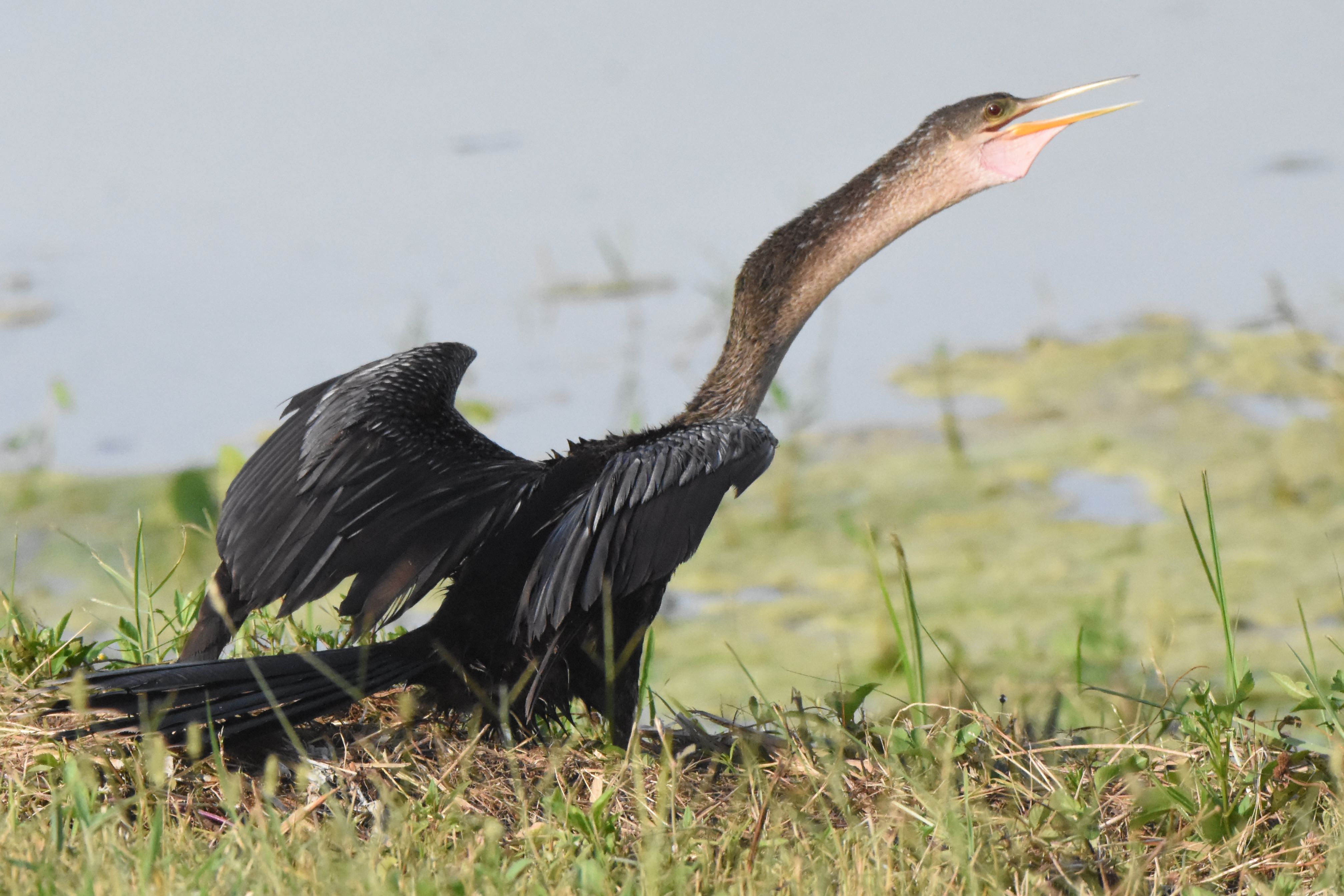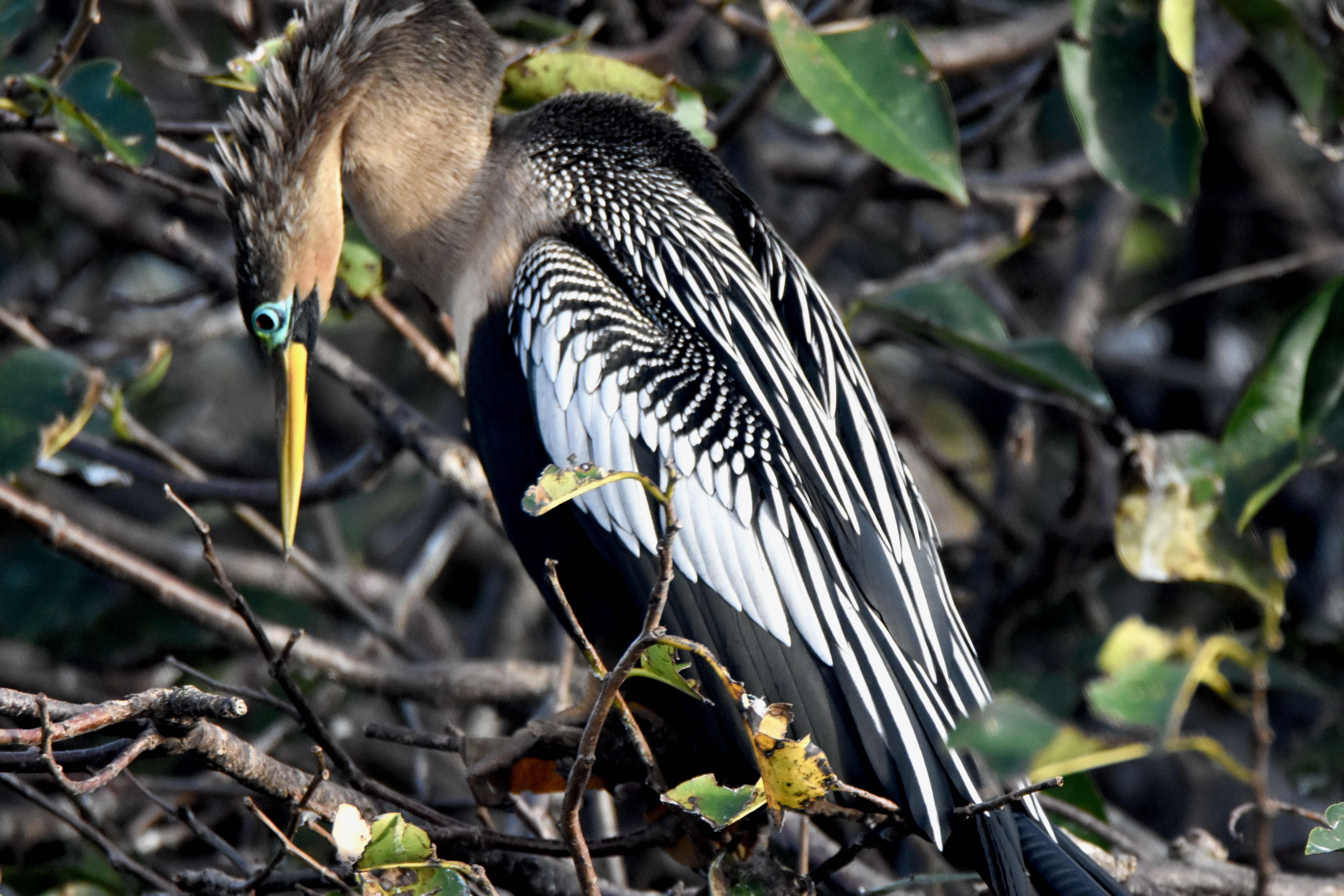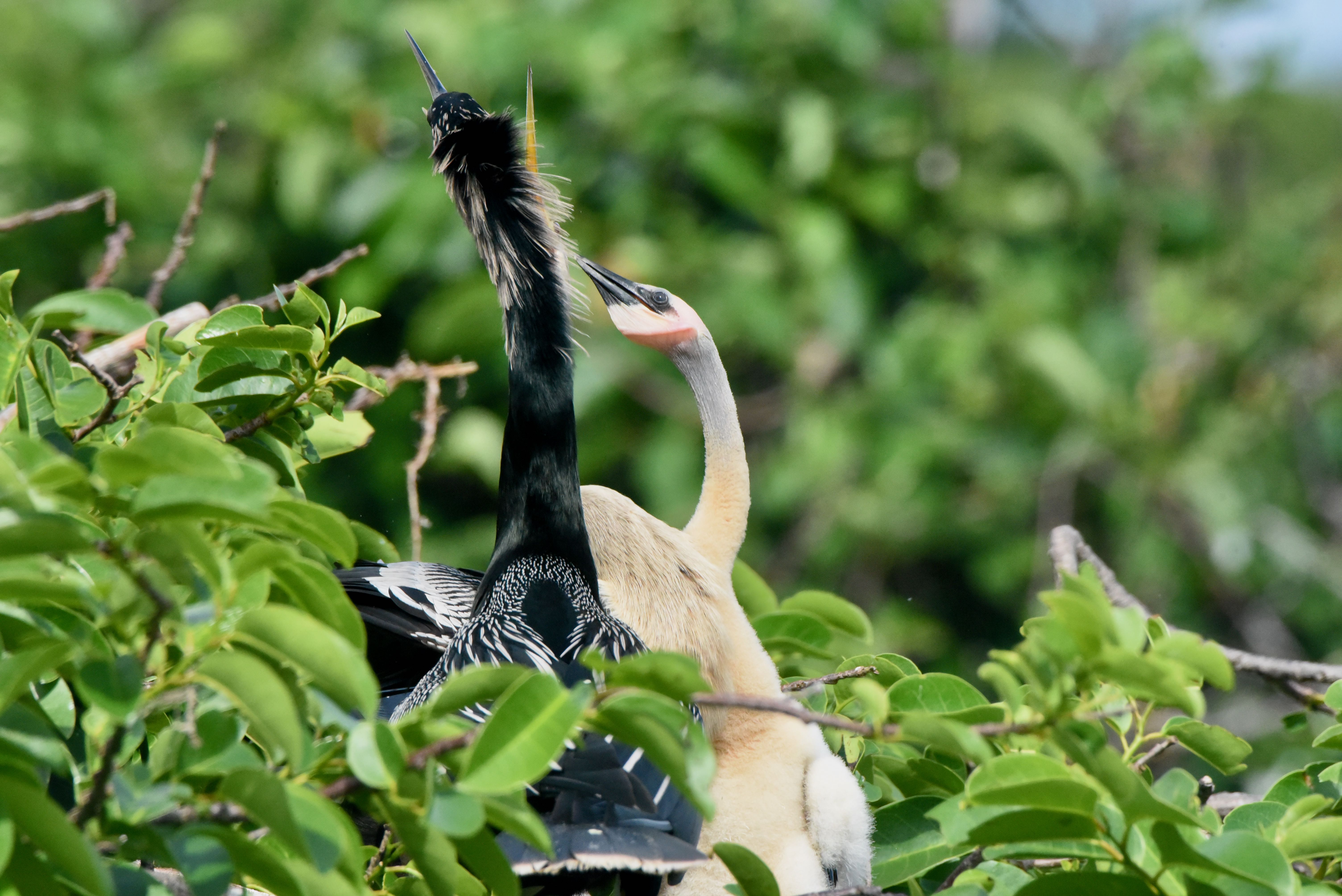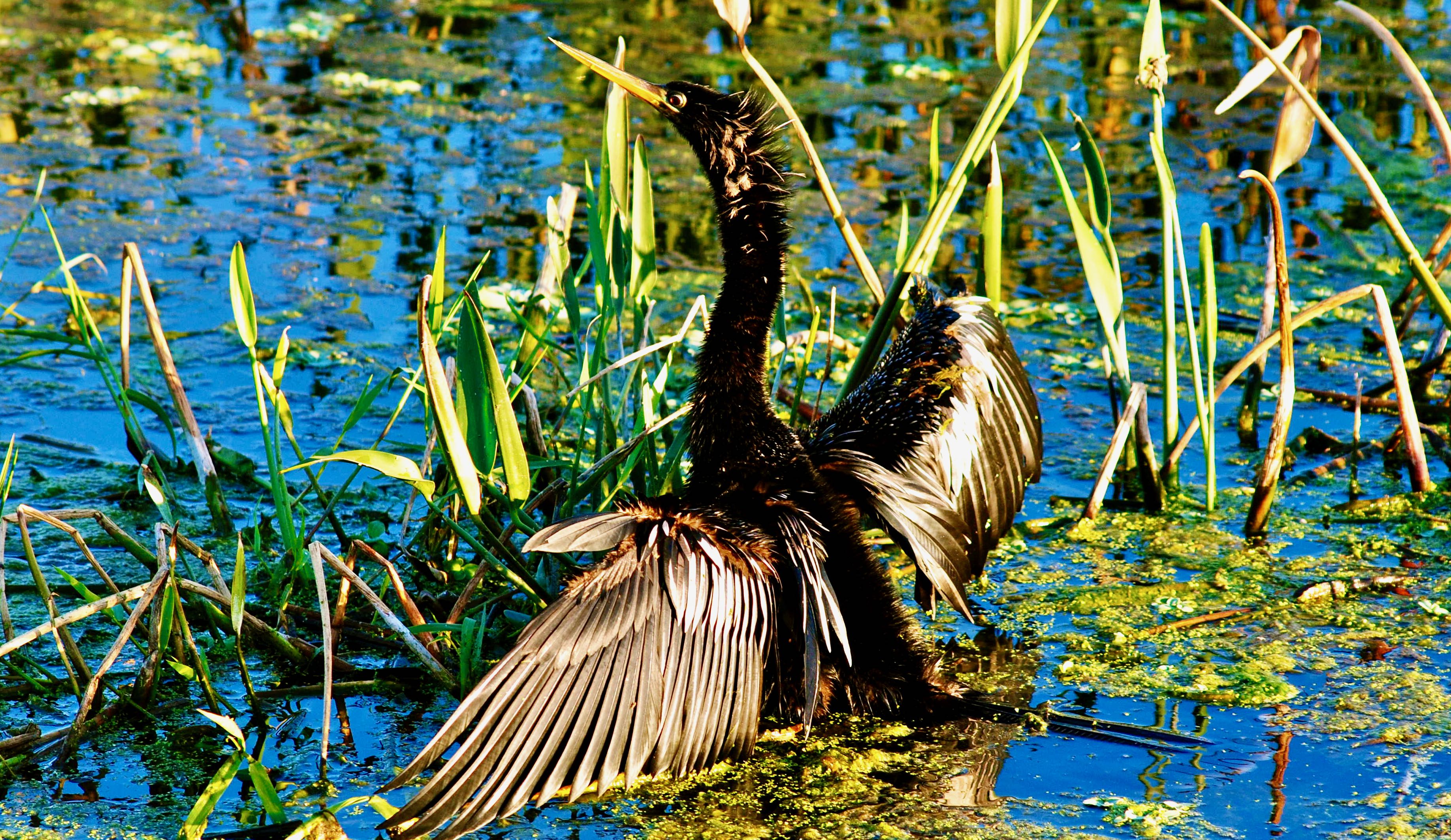
Anhinga, photographed at Green Cay Nature Center, Boynton Beach, Palm Beach County, in April 2012.
Some call it the water turkey. Others call it the snake bird. Scientists use Anhinga anhinga to identify it. We prefer to call it the Loch Ness Monster. If you see it bobbing its head and long, thin neck out of the water as it patrols for fishy delights, you’ll know why. To most everyone else, it's simply the anhinga.
You’ll see the anhinga year-round in South Florida, hanging near water. It’s a common sight along canals, impoundments and in wetlands. A few things make the anhinga different. First, it is a water bird but it lacks the oils that repel water like, for example, ducks have. It can’t fly when wet, so it will perch and spread its wings so that air and the sun will dry them out.
That lack of oils also makes the anhinga less buoyant than other water fowl, such as ducks, grebes and moorhens. It tends to swim lower in the water as a result. That feature becomes an advantage as it hunts.
Anhingas have webbed feet similar to a duck's, and that makes it an excellent swimmer. At the same time, you'll see it perched on a tree branch, unlike most ducks.
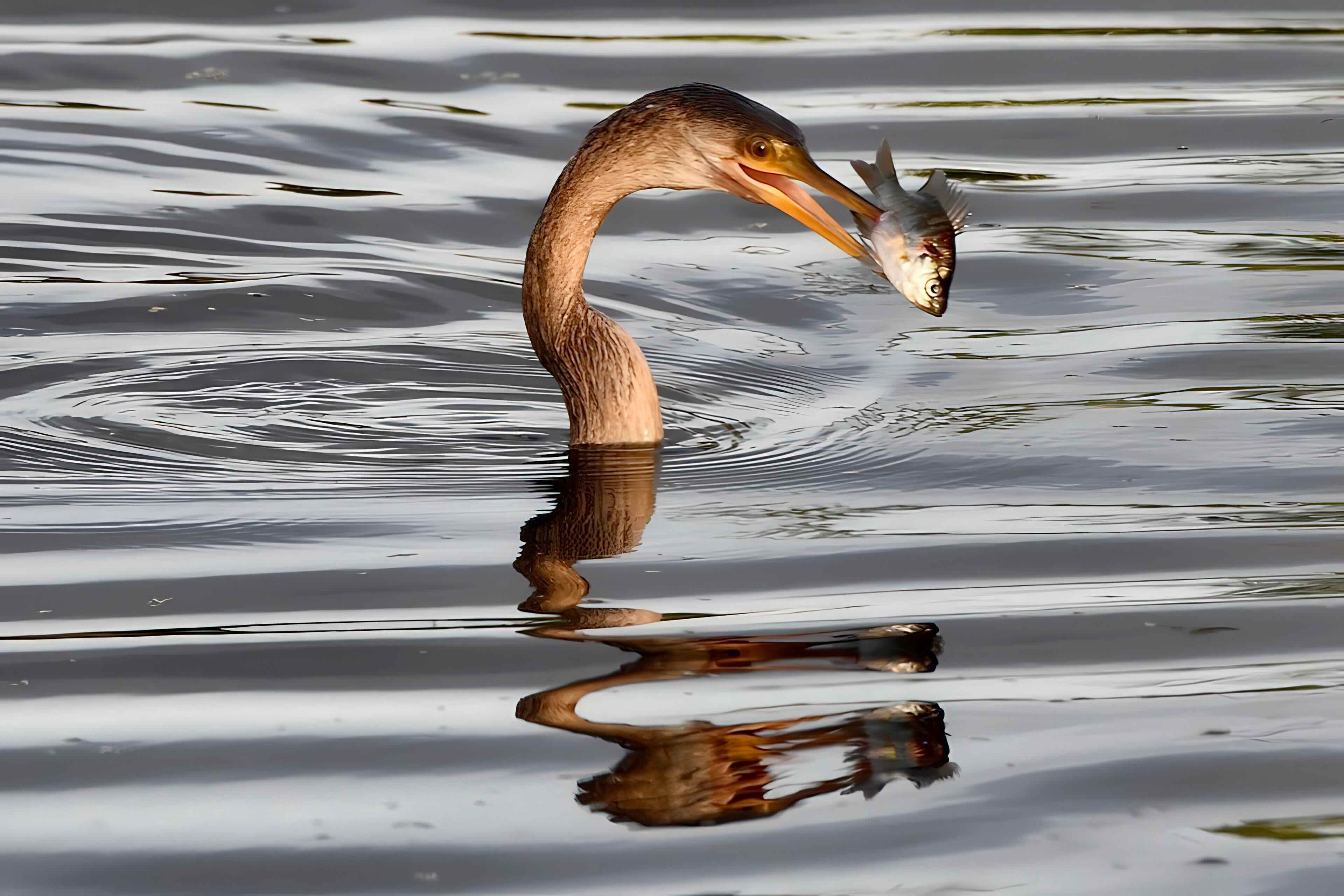
Also on the anhinga menu: the occassional snake, small turtle and baby alligator. On the other hand, anhiga is on the menu for adult gators.
They closely resemble double-crested cormorants, which share some of the same habitats, but they are not related. The surest way to tell the two apart is the bill — the anhinga's is sharp, straight and pointed, while the cormorant's is hooked downward at the end and bright orange.
Anhingas' range covers the southeastern United States, including all of Florida, and as far south as Argentina and Uraguay. Its population globally is secure, but it is "of concern" in Arkansas, Mississippi, Oklahoma and Tennessee.
It is a large bird, about three feet in length, with a wingspan of about three-and-a-half feet. It is an excellent flyer, and will ride thermals — rising pockets of hot air — hundreds of feet into the sky similarly to vultures. It can glide long distances without flapping its wings.
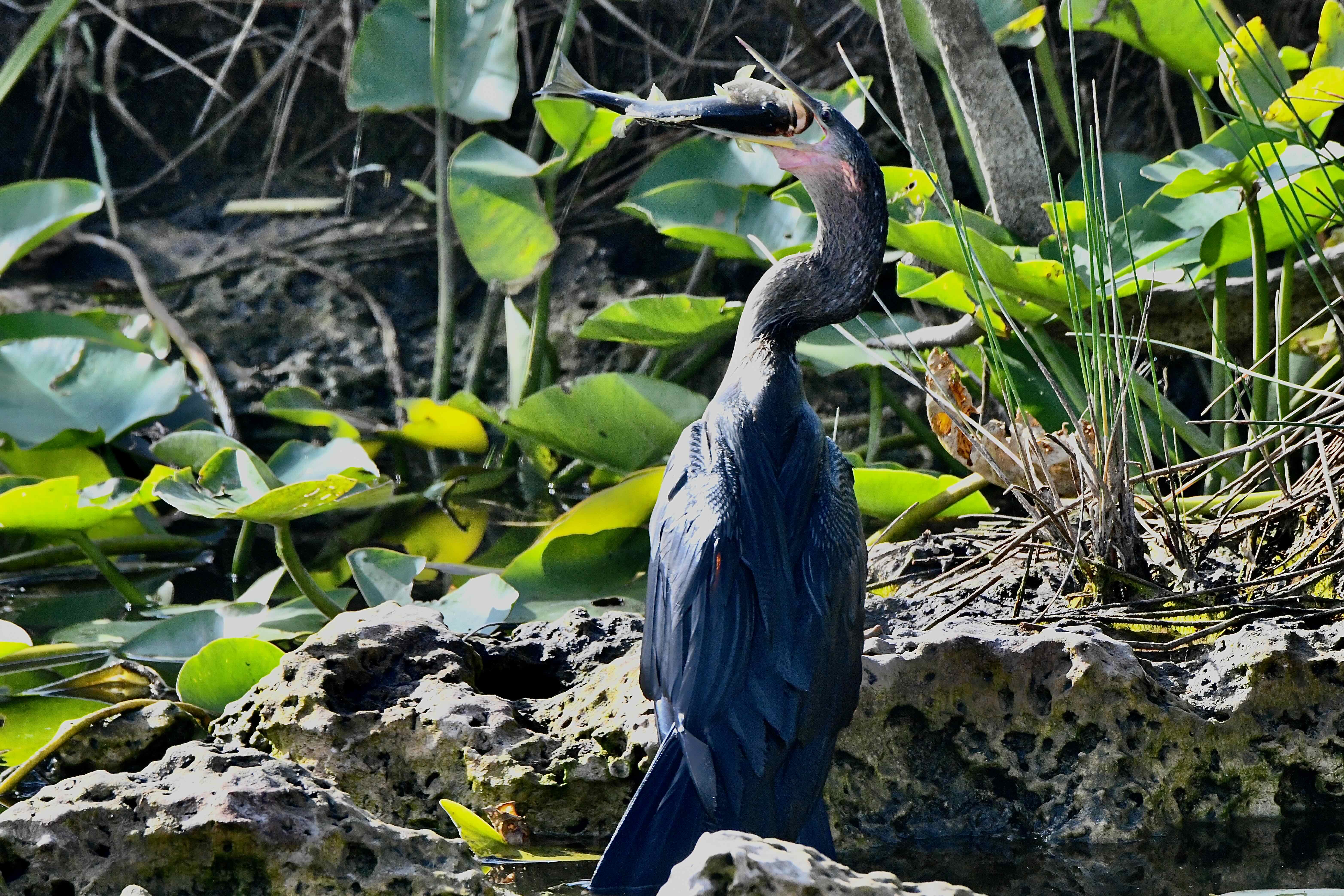
They often will build their nests in communities with other water birds. That's most apparent at Wakodahatchee Wetlands, where anhingas roost on pond apple tree islands along with various herons and egrets and wood storks.
Males begin nest construction before they have a mate. They select a site within a colony and begin to gather and assemble sticks and vegetation in a fork of a tree. The nest site is usually near or overhanging water. Once mated, the female takes over the bulk of the actual construction, using materials the male gathers.
Females lay between two and five eggs, which will take four weeks, give or take, to hatch. Both parents share the job of egg-sitting.
Once hatched, both parents feed their offspring. After a couple of weeks, the hatchlings are able to move about the nest. How long it will take them before they are ready to fledge is unknown.
Males are black with silvery streaks on their wing feathers. Females have the same streaking, but their necks are lighter in color. Both are the same size.
Green Cay Nature Center

